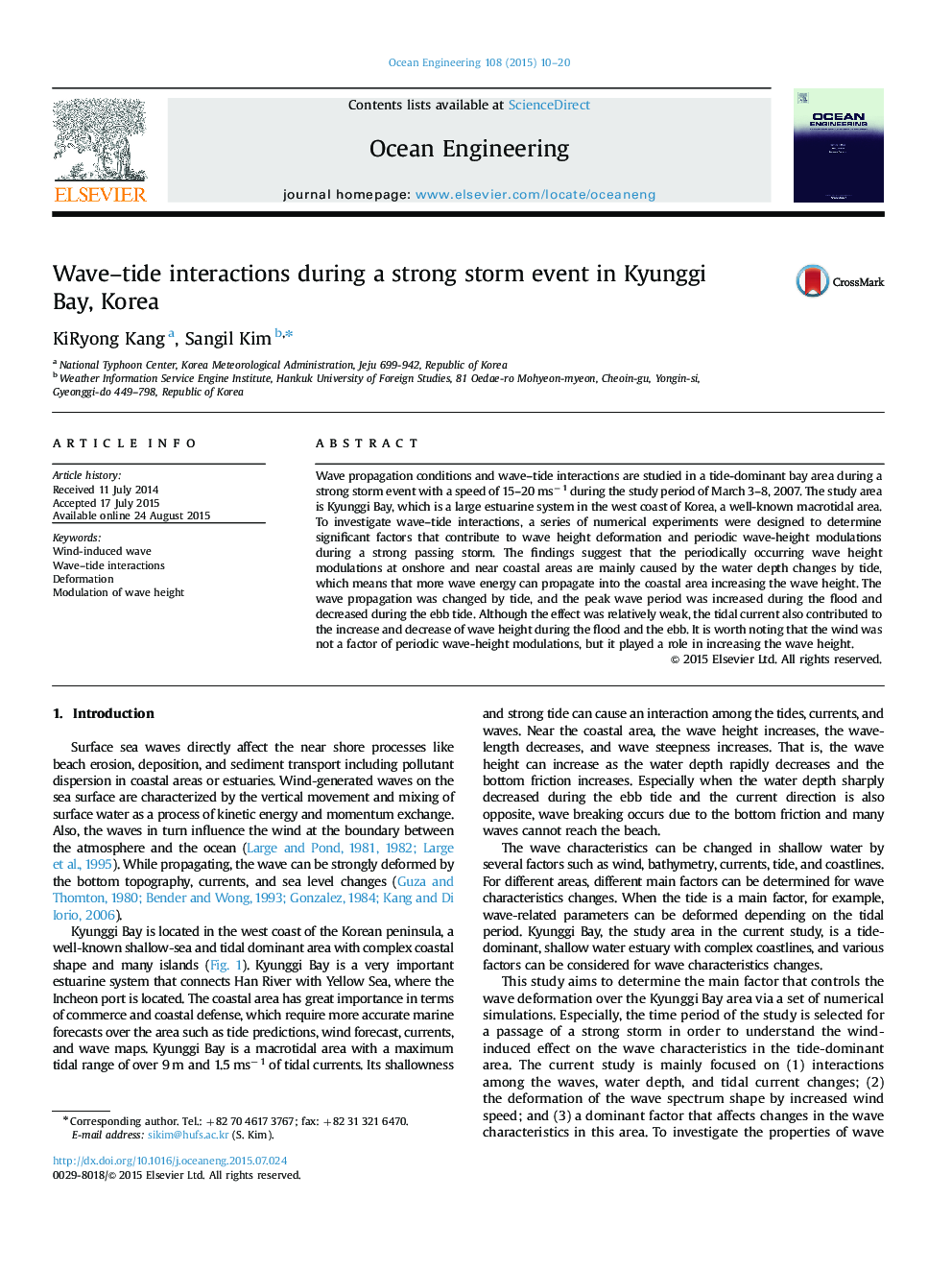| Article ID | Journal | Published Year | Pages | File Type |
|---|---|---|---|---|
| 8065398 | Ocean Engineering | 2015 | 11 Pages |
Abstract
Wave propagation conditions and wave-tide interactions are studied in a tide-dominant bay area during a strong storm event with a speed of 15-20Â msâ1 during the study period of March 3-8, 2007. The study area is Kyunggi Bay, which is a large estuarine system in the west coast of Korea, a well-known macrotidal area. To investigate wave-tide interactions, a series of numerical experiments were designed to determine significant factors that contribute to wave height deformation and periodic wave-height modulations during a strong passing storm. The findings suggest that the periodically occurring wave height modulations at onshore and near coastal areas are mainly caused by the water depth changes by tide, which means that more wave energy can propagate into the coastal area increasing the wave height. The wave propagation was changed by tide, and the peak wave period was increased during the flood and decreased during the ebb tide. Although the effect was relatively weak, the tidal current also contributed to the increase and decrease of wave height during the flood and the ebb. It is worth noting that the wind was not a factor of periodic wave-height modulations, but it played a role in increasing the wave height.
Keywords
Related Topics
Physical Sciences and Engineering
Engineering
Ocean Engineering
Authors
KiRyong Kang, Sangil Kim,
